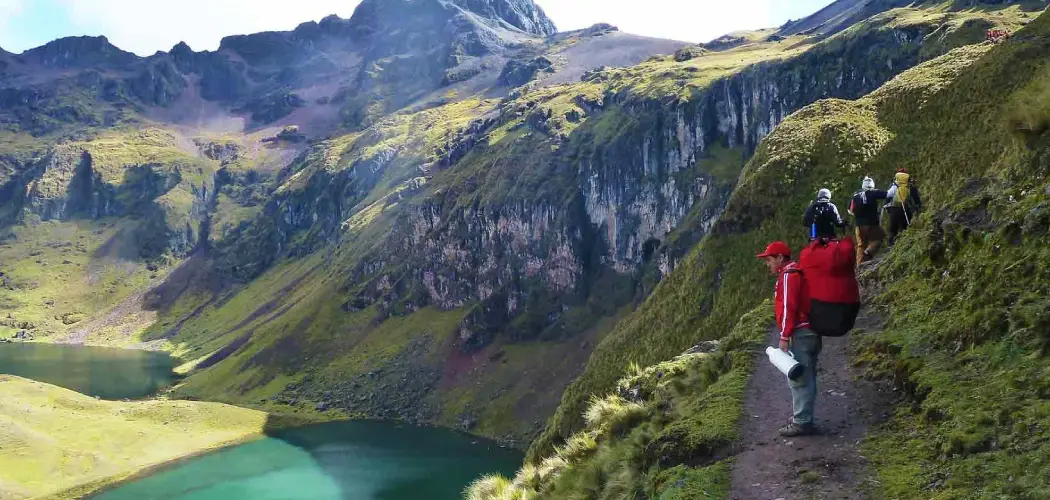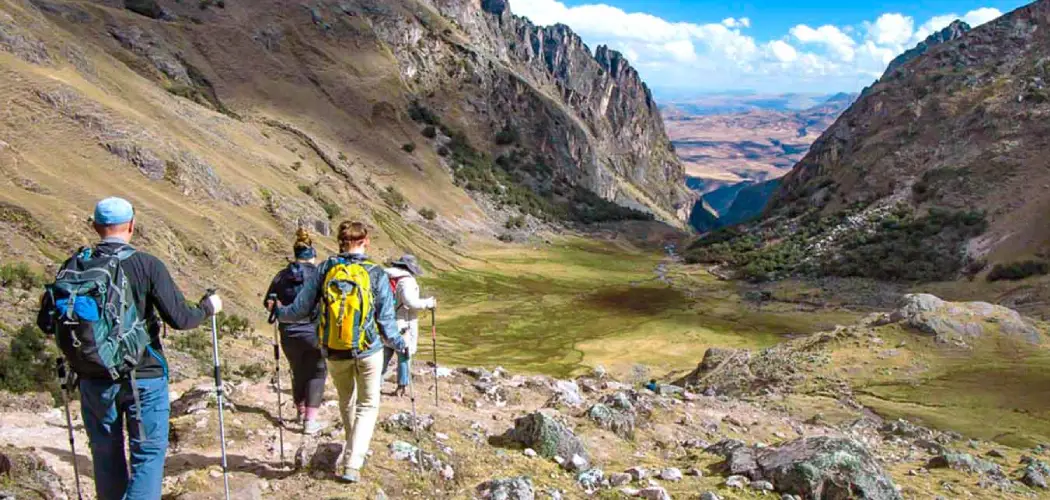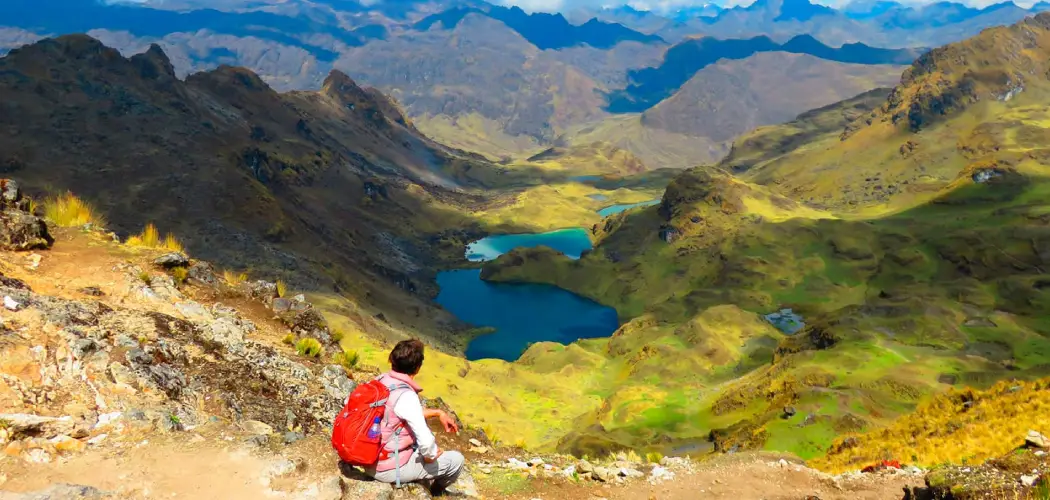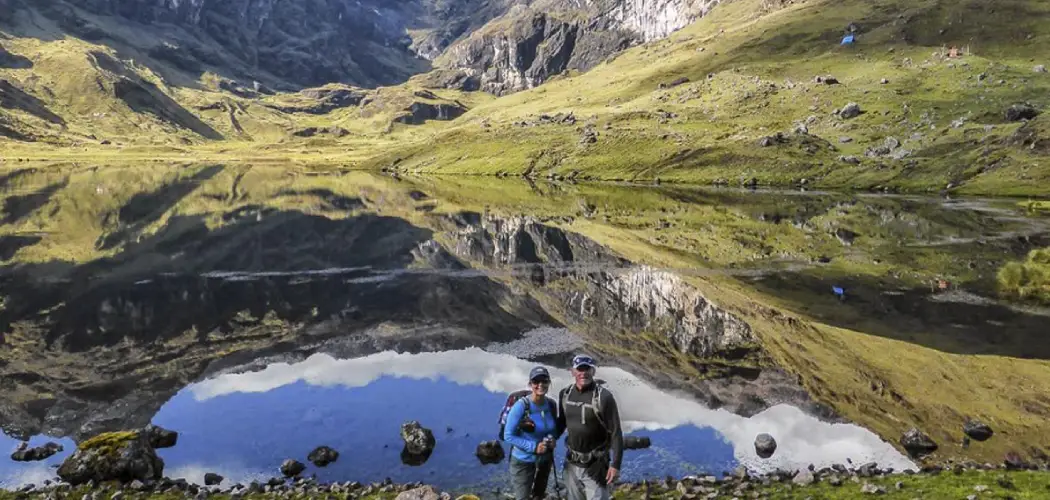Are you looking for an adventure that combines nature, culture, and breathtaking landscapes? The Lares Trek is the perfect experience for you. This journey will take you through the Andes mountains, where you can meet local communities, enjoy natural hot springs, and admire panoramic views that will leave you speechless. Get ready for a hike that will connect you with the essence of Peru and its people.
What is the Lares Trek?

The Lares Trek is a hiking route in the Cusco region of Peru that takes you through stunning Andean landscapes and indigenous communities. Unlike more well-known paths, the Lares Trek allows you to immerse yourself in local culture and enjoy a less crowded and more authentic experience. This trek is ideal for those looking to connect with nature and learn about the ancient traditions of the Andes.
Route and Highlights of the Lares Trek
The Lares Trek begins in the community of Lares, located at approximately 3,100 meters above sea level. From here, hikers head into the high mountains, passing through villages like Huacahuasi and Patacancha, where they can observe the locals’ agricultural and textile practices.
The trail offers spectacular views of snow-capped peaks such as Pitusiray and Sawasiray, which reach heights of over 5,000 meters. Additionally, there are opportunities to bathe in the natural hot springs of Lares, adding a touch of relaxation to the adventure.
Difficulty and Preparation
The Lares Trek is considered moderately difficult. While it does not require advanced technical skills, it is important to be in good physical condition due to the altitude and daily hikes ranging from 6 to 8 hours. It is advisable to acclimatize in Cusco for at least two days before starting the trek to avoid altitude sickness.
The best time to undertake the Lares Trek is during the dry season, from May to October, when the weather is more stable and trail conditions are optimal. However, the months from November to April are also viable, though they may present rain and more slippery trails.
Cultural and Natural Connection
One of the highlights of the Lares Trek is the interaction with local communities. Travelers have the opportunity to meet Quechua inhabitants, learn about their customs and traditions, and see their way of life, which has changed very little over the centuries. This cultural connection, along with the stunning natural landscapes, makes the Lares Trek a truly enriching experience.
Main Attractions of the Lares Trek

The Lares Trek is a unique experience that combines impressive natural landscapes with deep cultural contact. Along this route, hikers can enjoy a variety of attractions, similar to those found in the Salkantay trek 4 Days, making this trek an unforgettable adventure.
Traditional Communities
One of the main attractions of the Lares Trek is the opportunity to visit and get to know Quechua indigenous communities. Villages like Huacahuasi and Patacancha offer an authentic view of Andean life, where travelers can closely observe traditional agricultural and textile practices. The residents of these communities are known for their hospitality and for keeping their ancestral customs alive, such as weaving garments from alpaca and sheep wool.
Andean Landscapes
The Lares Trek route traverses some of the most impressive landscapes of the Andes. From green valleys and meadows to majestic snow-capped mountains, every step offers a breathtaking view. The snow-capped peaks of Pitusiray and Sawasiray, reaching heights of over 5,000 meters, are just some of the highlights. Additionally, hikers can enjoy crystal-clear mountain lakes and winding rivers that enrich the natural environment.
Lares Hot Springs
Another notable attraction of the Lares Trek is the Lares hot springs. These natural hot water pools, located near the trek’s starting point, provide a relaxing break for hikers. Soaking in these hot springs is an excellent way to relieve muscle fatigue and prepare for the days of hiking ahead.
Archaeological Sites
Along the way, you can also find ancient Inca archaeological sites, offering a direct connection to the region’s rich history. These historical remnants allow hikers to imagine what life was like during the Inca era and appreciate the advanced engineering and architecture of this civilization.
Flora and Fauna
The Lares Trek is also a paradise for nature lovers. The diversity of flora and fauna is remarkable, with the possibility of spotting Andean bird species, llamas, alpacas, and perhaps even the majestic condor. The vegetation ranges from lush cloud forests to alpine tundra zones, providing an ever-changing and fascinating environment.
How to Prepare for the Lares Trek

Proper preparation for the Lares Trek is essential to ensure a safe and enjoyable experience. Here is a detailed guide on how to get ready for this unforgettable Andean adventure.
Acclimatization and Physical Condition
Before starting the Lares Trek, it is crucial to acclimatize to the altitude. Cusco, the trek’s starting point, is at 3,400 meters above sea level, so it is recommended to spend at least two days in the city to adapt. During this time, avoid intense physical activities and stay well hydrated.
Being in good physical condition is also fundamental. The trek involves daily hikes of 6 to 8 hours, some of them on steep terrains and at high altitudes. It is advisable to engage in cardiovascular exercises, such as running or cycling, at least a month before the trip to strengthen your body and increase endurance.
Essential Gear
For the Lares Trek, you will need the appropriate gear to face the weather conditions and varied terrain. Here is a detailed list of what you should bring:
Warm Clothing: Include a waterproof jacket, wool sweaters, and thermal clothing, as temperatures can drop significantly at night.
Proper Footwear: Sturdy and comfortable hiking boots are indispensable. Make sure they fit well and are waterproof.
Backpack: A good-quality backpack with a capacity of 40 to 50 liters is ideal for carrying your daily essentials.
Sleeping Bag: A sleeping bag that can withstand below-zero temperatures is essential.
Sun Protection: Include a hat, sunglasses, and sunscreen, as UV radiation is more intense at high altitudes.
Water Bottle and Purification System: Staying hydrated is crucial. Bring a reusable bottle and tablets or a filter to purify water from rivers and springs.
Nutrition and Health
During the Lares Trek, maintaining adequate nutrition is vital to having enough energy. Organized tours usually include nutritious meals, but it is advisable to bring additional snacks such as dried fruits, energy bars, and nuts.
What is the Best Time to Do the Lares Trek?

Choosing the best time to undertake the Lares Trek is essential to fully enjoy this Andean adventure. The season in which you decide to trek can influence weather conditions, trail accessibility, and the overall experience.
Dry Season (May to October)
The best time to do the Lares Trek is during the dry season, from May to October. During these months, weather conditions are more stable, with clear skies and minimal precipitation. This means that the trails will be drier and firmer, making hiking easier. Additionally, the panoramic views of the mountains and valleys will be clearer and more spectacular.
June to August are especially popular due to the cool and pleasant weather. Daytime temperatures usually range from 15°C to 20°C, though they can drop significantly at night, even reaching below zero in higher areas. It is important to bring appropriate warm clothing for the cold nights.
Rainy Season (November to April)
Although it is possible to do the Lares Trek during the rainy season, from November to April, there are several factors to consider. During these months, precipitation is frequent, making the trails slippery and more difficult to traverse. Heavy rains can also cause landslides, affecting the trek’s safety.
However, there are advantages to this season. The landscapes become incredibly green and blooming, offering a distinct natural beauty. The Lares hot springs are especially comforting after a hike in the rain. If you decide to trek during these months, ensure you bring waterproof clothing and are prepared for changing weather conditions.
Festivities and Culture
Besides the weather, considering local festivities can enrich your experience. In June, Cusco celebrates Inti Raymi, the Festival of the Sun, one of the most important festivities in the Andean calendar. Participating in these celebrations before or after the trek can add a significant cultural element to your trip.
What to Bring for the Lares Trek

Preparing adequately for the Lares Trek is essential to enjoy a safe and comfortable experience. Here is a detailed list of items you should bring for this Andean adventure.
Clothing and Footwear
The right clothing is crucial to handle the diverse weather conditions of the Lares Trek. Here’s a list of essentials:
Warm Clothing: Bring a waterproof and windproof jacket, wool sweaters, and thermal clothing. Temperatures can vary drastically, especially at night, which can be very cold.
Layers: Dress in layers to adjust to temperature changes. A long-sleeved shirt, a fleece, and a waterproof jacket are ideal combinations.
Trekking Pants: Preferably waterproof and quick-drying.
Proper Footwear: Good hiking boots that are comfortable and waterproof are indispensable. Ensure they are well broken-in to avoid blisters.
Accessories: Hat or cap for the sun, gloves, and scarf.
Basic Equipment
For the Lares Trek, you will need some basic items to keep you safe and comfortable:
Backpack: A 40 to 50-liter backpack is ideal for carrying your daily essentials.
Sleeping Bag: Ensure it is suitable for below-zero temperatures.
Water Bottles and Purification System: Stay hydrated at all times. Bring a reusable bottle and purification tablets or a portable filter to ensure you always have potable water.
Headlamp: With extra batteries, to light your way at night and early mornings.
Sun Protection: Sunscreen, sunglasses, and lip balm with SPF.
Food and Health
Bringing the right food and supplies is also vital for your well-being during the Lares Trek:
Energy Snacks: Granola bars, dried fruits, nuts, and chocolates are ideal for maintaining energy levels.
Light Meals: If your tour does not include meals, bring easy-to-prepare foods such as instant soups and oatmeal.
First Aid Kit: Include pain relievers, anti-diarrheals, altitude sickness medication, bandages, plasters, and wound disinfectant.
Other Useful Items
Camera: To capture the stunning landscapes and special moments.
Plastic Bags: To keep dirty clothes and trash separate.
Documentation: Carry a copy of your passport, travel tickets, and any other important documents.
How Long is the Lares Trek?

The Lares Trek is a wonderful adventure through the Andean landscapes and traditional communities of Cusco. The trek’s duration can vary depending on the specific route and itinerary you choose, but generally, the Lares Trek lasts between 3 and 4 days.
Typical Itinerary of the Lares Trek
Most organized tours follow a similar itinerary, which can be broken down as follows:
Day 1: Cusco to Lares and Hike to Huacahuasi
On the first day, hikers leave Cusco early in the morning and head by transport to the community of Lares, located at approximately 3,100 meters above sea level. Here, travelers can enjoy the Lares hot springs before starting the hike to Huacahuasi. This day involves around 4 to 5 hours of hiking.
Day 2: Huacahuasi to Patacancha
The second day of the Lares Trek is one of the most challenging yet rewarding. Hikers ascend through mountainous landscapes to reach the highest point of the trek, Ipsaycocha Pass, at 4,400 meters above sea level. After enjoying the stunning views, the descent begins towards the Patacancha valley. This day involves about 7 to 8 hours of hiking.
Day 3: Patacancha to Ollantaytambo
On the third day, the trek continues towards the town of Ollantaytambo, where travelers can explore the Inca ruins and the picturesque town before taking the train to Aguas Calientes. This day involves around 4 to 5 hours of hiking, followed by a train journey of approximately 2 hours.
Day 4 (Optional): Machu Picchu
Many trekkers choose to end their adventure with a visit to Machu Picchu. This day is dedicated to exploring the Inca citadel, with a guided tour of 2 to 3 hours and free time to enjoy the site before returning to Cusco.
Duration Variations
Some trekkers may opt for a shorter version of the Lares Trek, lasting 2 days, which includes a more direct hike and fewer community visits. On the other hand, longer versions of up to 5 days can include additional visits to other Inca ruins and a deeper exploration of local communities.
Factors Influencing Duration
Physical Condition: The duration of daily hikes can vary depending on each person’s pace. Those with more trekking experience may complete the stages more quickly, while the less experienced may need more time.
Weather: Weather conditions can also affect the trek’s duration. During the rainy season, the trails can be more slippery and difficult to navigate, slowing down the pace.
CONTACT US:
We are a Travel Agency specialized in package tours, if you need any information, please do not hesitate to contact us.



















